The Beginner's Guide To Segmenting Your Email List
You’ve been told that you need to segment your list.
But if you’re like many of the people we’ve talked to, you’re not quite sure where to start.
- “What does it actually mean to segment? Tag people… right?”
- “How do I figure out what segments I should be putting my subscribers into?”
- “OK, so I segment… what do I actually do with these segments? How does it help my business?”
If you’re wondering what the deal is with segmentation, why it matters, and how to do it… this guide’s for you.
Segmentation, as I’ll talk more about later, is a massive super power.
Your audience has different reasons for caring about what you have to offer, and if you can better understand Who your audience is and What they individually need from you, you’re going to be able to send more targeted communication to them.
The result?
But where do you start?
Some companies really know their customers. They’re intimately aware of who they’re serving and what they need… on a macro-level.
But they’re not entirely sure how to represent that as concrete segments. If that’s you, this guide was written to help you jumpstart your segmentation.
The two types of segments you need to be using
When it comes to segmenting your audience, the first step is to do your best to try to determine what you’ll do with this data.
As a general rule of thumb, you want to understand Who you’re serving and What they need.
The Who
This will affect the language you use. For example, hospitals use the word “patients”, law firms use “clients”, and retail shops use “customers” – all of which are different ways of describing people who keep us in business.
This also affects case studies, testimonials, and other social proof you might use. Prospective customers want to see others like them who have succeeded with your product or service. Once you know who someone is, you can better explain how you’re able to help someone just like them.
When setting up a segmentation strategy, we’ve seen that many companies default to using obvious Who segmentation… things like gender, age, location, and so on.
But unless you plan on using, say, gender or age data in a meaningful way, there’s no point in collecting it. Project management software isn’t sold any differently to men vs. women, but a course on losing weight might.
It’s important to think through what segment data you might use to help you better sell your products or services.
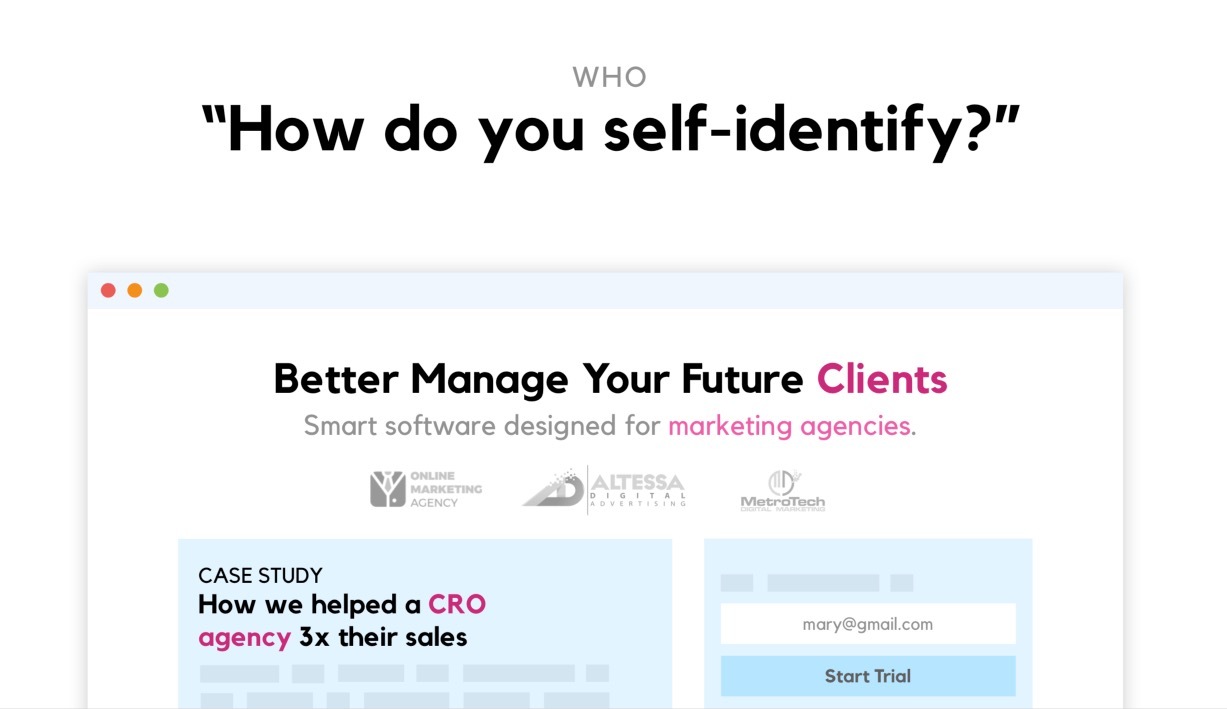
Project management, or really any B2B software, can be sold better if you understand the industry or job role of the person you’re selling to. If they work at software-as-a-service company and are in charge of marketing, you can push the benefits marketers care about and show case studies from other software-as-a-service companies.
Gender data? Age data? Location even? Zero bearing on effectively selling project management software.
Here are a few ideas on how you can segment based on who someone is:
- Job role
- Industry
- Company size
- Gender
- Age
- Location
Remember: Just make sure that you have a plan for how to use this data. Unless it can help you change how you speak to someone, or the social proof or case studies you could show someone, disregard.
The What
The other type of segment data you should care about is what someone needs from you.
This is the problem that drew them to you and your company, or whatever reasons they might have in hanging around on your website or joining your email list.
This is a bit trickier to figure out, because there’s on one right set of options. You’re going to need to collect data from your subscribers and attempt to isolate out 3-4 key reasons that people have for visiting your website, opting in to a lead magnet, and so on.
What you’ll do with this segment data is use it to reposition your offer, whether that’s a sales page or just a humble newsletter opt-in, based on someone’s need.
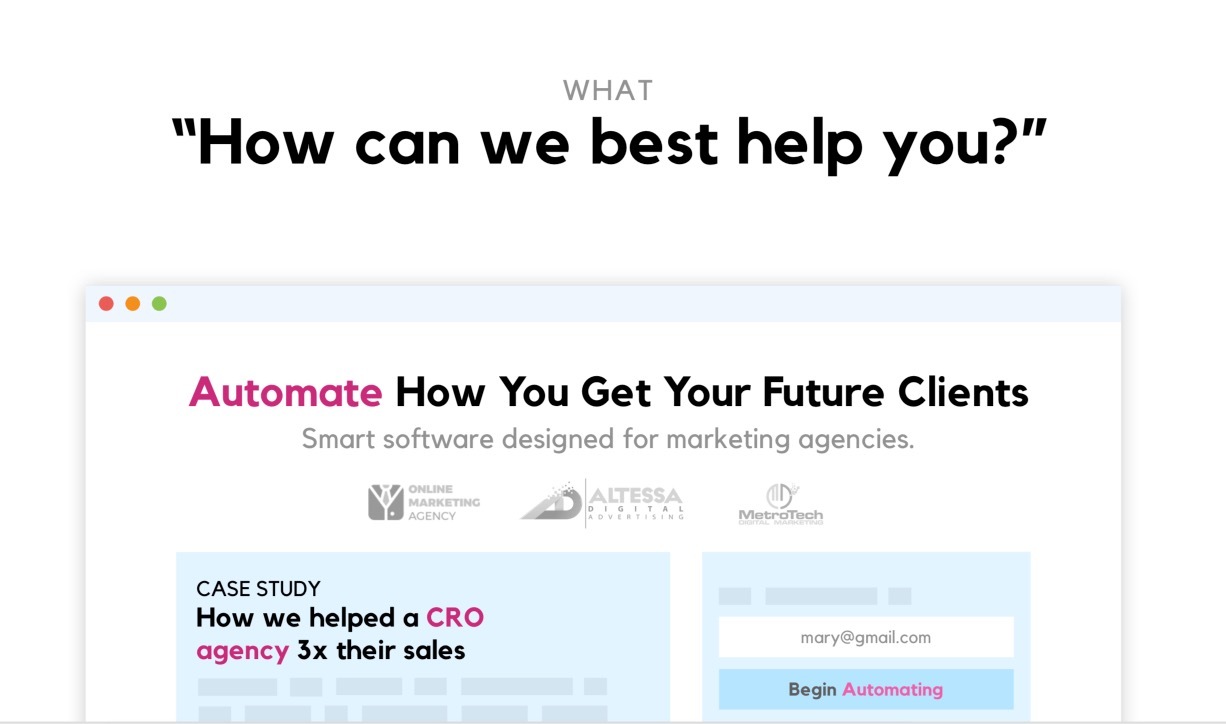
You know how effective niching is? How everyone wants that one thing… that product or service that was seemingly created just for them?
That’s what we’re trying to do here. Freelance designer? Struggling to find new clients? Here’s exactly how our newsletter can help designers win more clients. Boom.
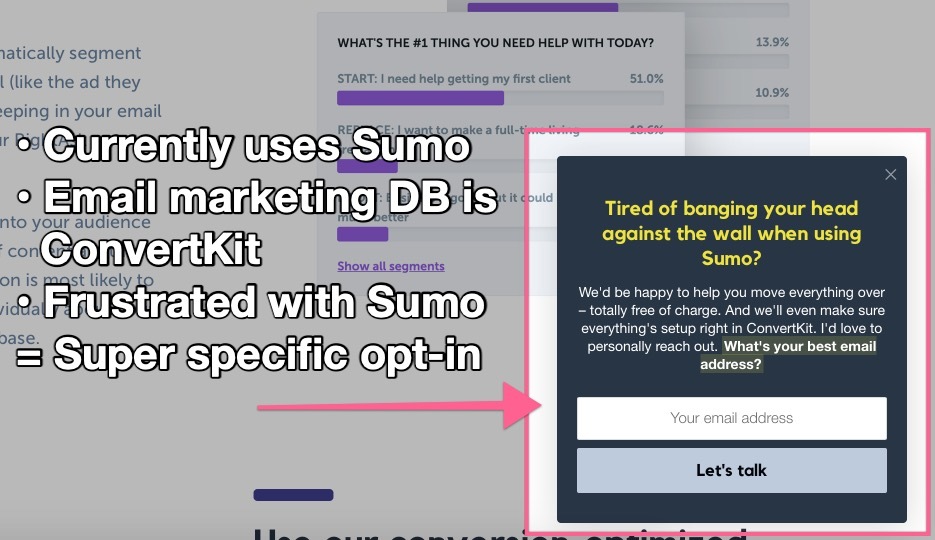
Collecting “here’s who I am, here’s what I need” upfront from your list
You could try to guess what segments to start with…
Or you could just ask people 😀
Fire off an email to your list that says something like:
Hey! We’re in the process of reworking our upcoming content schedule and product lineup, and we want to be 100% positive that we’re giving you exactly what you need from us.
If you have a minute or two to spare, could you reply to this email with 1-2 sentences that describe who you are / what kind of business you run, and what’s the #1 thing you’re hoping to get help with from us?
This makes for a great one-off email to your entire list, but it’s also a good idea to add it to your standard list onboarding email sequences – even if you’re already segmenting people before they join your list.
You can never have enough raw data, and one perk of automatic segmentation is that you can harvest “voice-of-customer” language that you can then use when personalizing pitches or sales pages.
For example, if many people in the “finance” industry keep saying the same thing, again and again, in describing their problems, you’re probably going to reuse that exact same language when communicating with other finance people in the future.
Normalizing what you learn
After you send this email, you’ll hopefully be sitting on a bunch of replies to your list.
Now you need to distill all that down into concrete segments that you can work with.
Our recommended way of doing this is with a good, old-fashioned spreadsheet. There’s no fancy machine learning going on here… just you, organizing all the raw bits and pieces of data you’ve collected so far, and getting them into a skimmable spreadsheet.
Create two different sheets, one for the Who and one for the What.
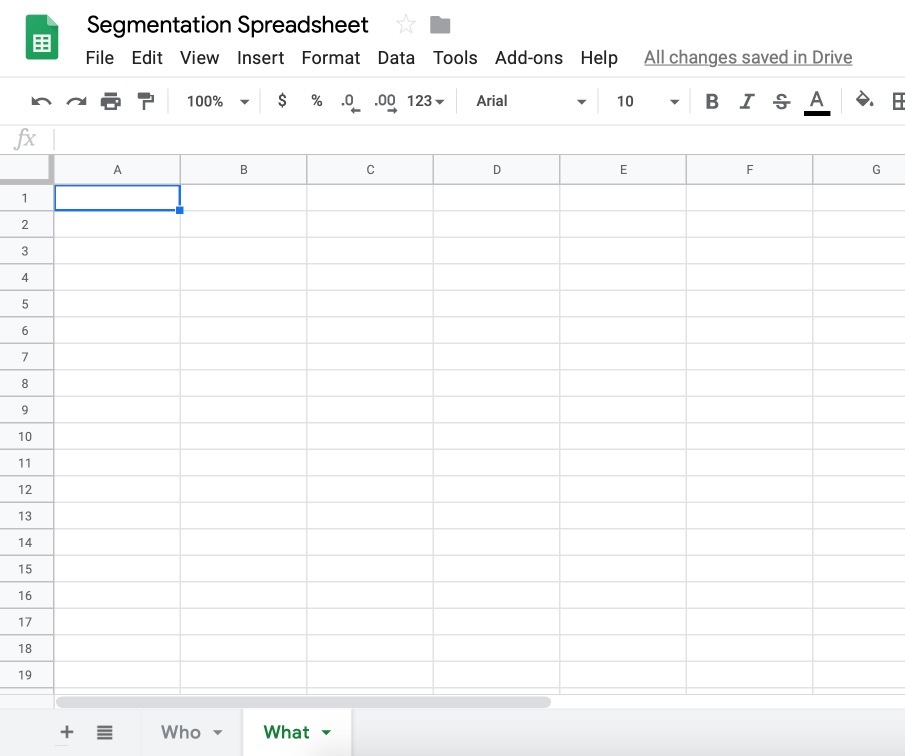
Ideally, the feedback you’ll be getting back from people is structured similar to what you asked for (“who are you, and how can I best help you?”)
What you want to do is to grab the language they’re using to describe their who and their what, and dump that into the respective spreadsheet.
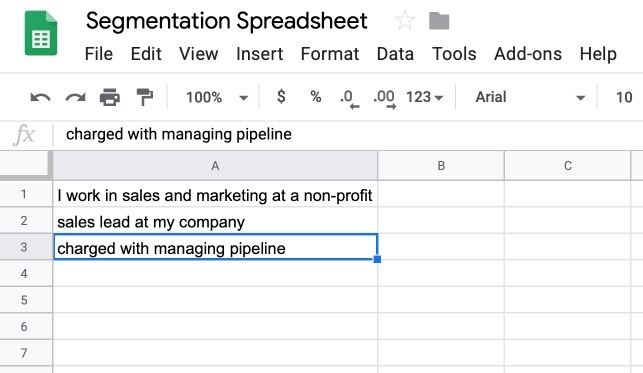
If it’s similar, append it to an existing column. And if it’s new, add it to a new column.

What this ends up doing is it allows you to group together common themes – these might be shared identities (“I’m head of marketing”, “I’m a part of the marketing team”, “I do social media stuff”) and file them under a single “Marketing” column.
And, in doing this, you start to hear (via this voice-of-customer data) how different people describe largely the same thing.
This is usually more obvious for things like job role and industry. There are only so many ways to describe the construction industry (don’t take my word for that, though, I’m probably wrong!)
Where this gets a bit trickier is with your What spreadsheet: why is someone here? And what do they need from you?
This might require you to read between the lines… what’s this person really getting at? What are they really saying? Is what they’re telling you a proxy to some bigger, more crucial problem?
What you’re really looking for are 3-4 different, core reasons someone might be at your website or joining your email list. (We’re going to leave room for an “Other”, which might be outliers that don’t really make sense to use as an actual segment – you’ll see what to do with that further down this guide.)
Also, don’t be afraid to create spin-off sheets, especially for your Who data.
Imagine someone says “I run marketing for an agency.”
You’d want to file that person under a new (or existing) “Marketing” column in your Who sheet, but you probably also want to add them under an “Agency” column.
Segmentation isn’t exclusive. Which means that someone could belong to a handful of non-competing segments. I might work in finance, be in charge of marketing, and want to generate more leads from my website, and are frustrated with the current software I’m using to do that.
Those are four discrete segments, all housed within four different potential groups.
- “Finance” might be under an “Industry” group (Who)
- “Marketing” is under a “Job Role” group (Who)
- “Generate more leads” is under “#1 Need” (What)
- “Frustrated with current software” I might put under “#1 Letdown” (What)
At a minimum, to begin you’re going to want at least one Who group and one What group. After going through your initial batch of “Who are you and what do you do?” feedback, you should have a nice starting lineup of segmentation options.
Segmenting your audience, both existing and future
Let’s say you’ve done the above exercise and have two simple sets of segment data you’ve come up with:
Type of work
- Design
- Development / Programming
- Marketing
- Writing
- Photography
- Other
What’s the #1 problem your business faces?
- Finding new project leads
- Closing clients
- Managing your projects
- Scaling a team
- Other
Inevitably, there will be people who say they freelance as a DJ, or say their problem is something way out of left field.
Don’t worry about trying to classify everyone. There will be outliers, and that’s totally fine.
There will also be people who say “I do web development, but I also design and write.” You’re going to want people to choose how they primarily identify, or what their most pressing What problem is (even if it’s multiple.) One option from each of the groups you’ve identified.
Now, you’re going to want to figure out how you’ll track and store this data in your email marketing database. Then, we’re going to find out how to get your list, both current and future, segmented!
Tracking segment data in your email marketing app
Despite how big of a deal your email marketing app makes of tagging, you’re not going to use tags (or lists) to track subscriber segmentation.
Instead, you’re going to use fields (sometimes known as “custom fields.”)
This means you’d go in and create fields on your subscribers. We’ll call one “business_type” and the other “problem.” The value of each field will be the specific segment they’re in…
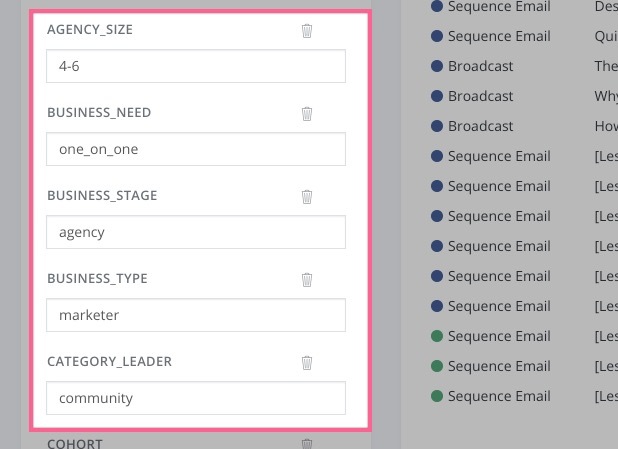
I’m not going to advise you to use tags because they’re not naturally group-able.
Here’s why you shouldn’t use tags:
Say you have a set of tags that represent a problem someone has. Tags like “Leads”, “Closing”, “Project Management”, and “Scaling”.
Cool. Sounds workable, right?
Well, what if someone gets tagged with “Leads” at first (they’re struggling to get leads.)
And then a few months later, you survey them again and their priorities have changed. Now they’re struggling with managing projects (“Project Management”)
So you tag them as that.
…Well, which is it? From a segmentation point of view, are you going to send them an email today about managing projects or about finding project leads? If they’re tagged as both, you have zero idea which one they actually are.
Most segmentation is one-of-many. “My #1 problem is…” or “I work in this industry…”
So you don’t want to ever have someone in the position where they might have contradictory tags (“Leads” and “Project Management”.) You want to always ensure that someone is getting exactly what they need, and to do this right you need super clean segmentation.
With tags, you need to create automations in your email marketing database that go and clean up sibling tags before adding someone to a new segment tag. If “Project Management” gets applied, you need to make sure you first remove “Leads” – or “Closing” (if they have it), or “Scaling”, etc.
With fields, just set the new value. A subscriber’s “problem” field goes from “leads” to “project-management”. You don’t need to worry about someone belonging to both, because that field can only have one possible value
Segmenting your existing list
If you’re sitting on an existing, unsegmented list, your first priority should be to get them to self-segment into the segmentation lineup you’ve created.
To do this, we’re going to email your list a survey, and when someone completes the survey we’ll set field data in your email marketing database.
First, create your survey.
Each question should map to the core Who and What fields that you’ve now set up in your email marketing database.
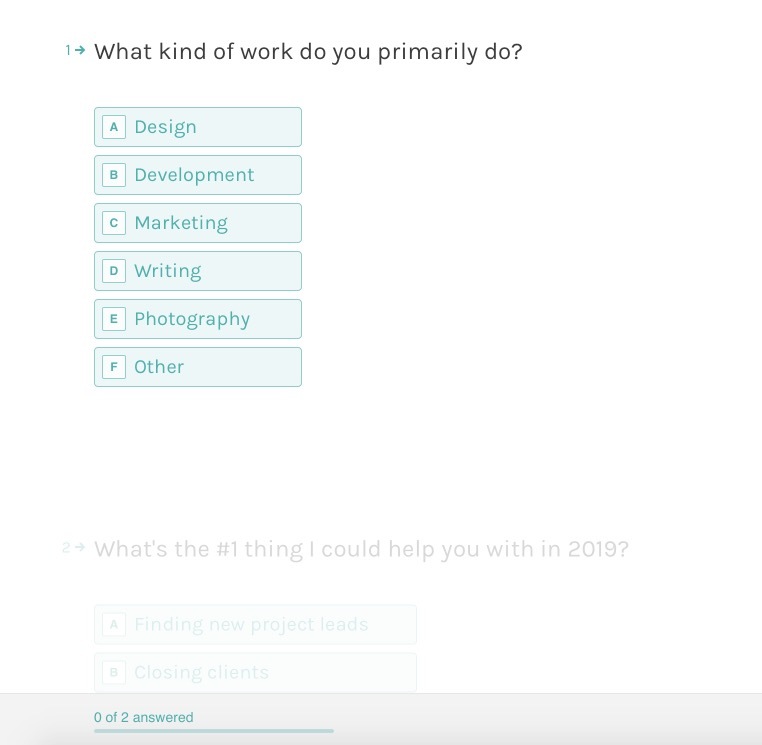
There are a number of different ways to host your survey, but the tool you end up using needs to do the following two things:
- Have a way of passing in “hidden fields” – specifically, the subscriber’s email address. This way, when you email your list your survey they won’t need to bother typing in their email address. (After all, you just emailed them!)
- The ability to associate survey data with the segment fields you’ve setup in your email marketing database.
Tools like Typeform or Gravity Forms are great options. They’re attractive and relatively inexpensive, and can get the job done.
To get data from your survey tool of choice and into your email marketing database, you might need to use third party software like Zapier to tie everything together.
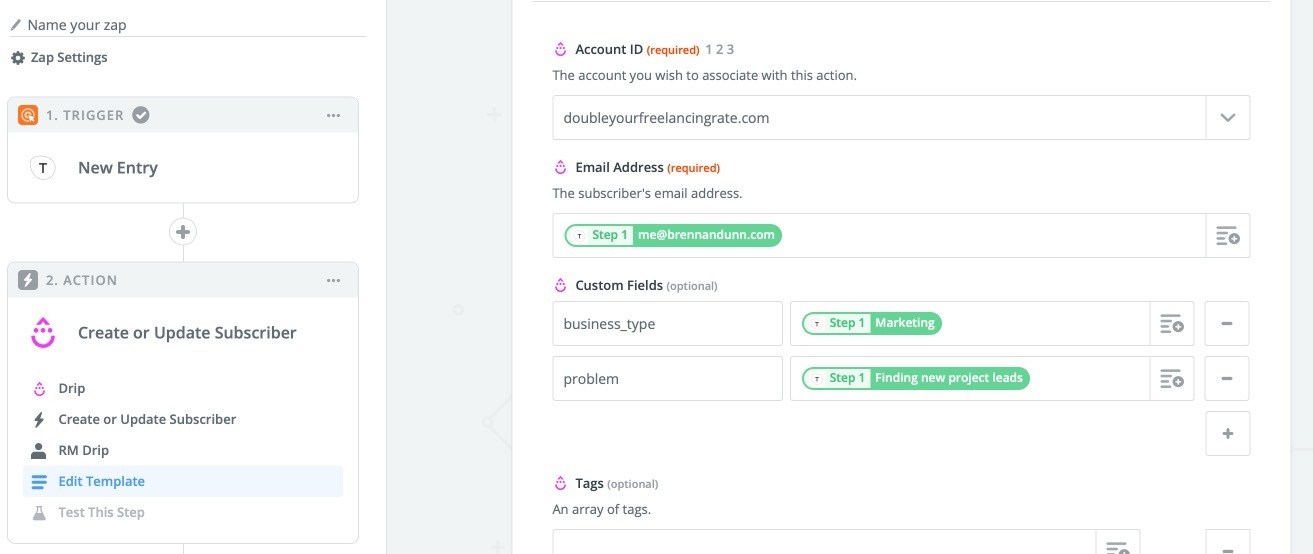
If you’re already a customer of RightMessage and want to use us to survey your list, we’ll automatically handle identifying your subscribers and syncing up any data you collect up to your email marketing database. Plus, you won’t need to pay for tools like Typeform and Zapier. While we’d love to have you use us to do this, we want to make this guide helpful regardless of what software you end up using.
Once you’ve setup your survey and set up the syncing of responses with individual contact records, you’re now going to send it to your list.
Next, create a new list-wide email. What’s important here is that you want your list to know why you’re asking these questions. Fortunately, there’s an easy and legitimate reason:
Hey! We’re current planning the next few quarters of content, products, and more that we plan on sending you. We think we know what we need to be focusing on, but we want to be absolutely positive.
We’ve put together a brief, 1-2 minute survey that will help us better understand exactly how we can give you exactly what you need from us.
-> …link to your survey
You want people to know that you’re not collecting this data because you want to turn Big Brother on them. Rather, you want to legitimately serve them better. The more you know about who they are and what they need from you, the better able you are to send them the right content in future.
Segmenting future subscribers
Now that you’ve bulk segmented your existing list, we’re going to now focus on how you can automatically segment all future subscribers.
There are a number of different ways to do this… quiz funnels, opt-in form dropdowns, trigger links, profiling sequences, and more. Below is a crash course on everything you need to know to actively segment your email list.
When someone joins your list
If you want to guarantee that new subscribers are segmented, then you’re going to want to segment them at the point of opting-in.
At a minimum, this means adding fields (preferably drop downs) to your opt-in forms, and these fields would map to the segment fields you’ve set up.
Here’s an example:
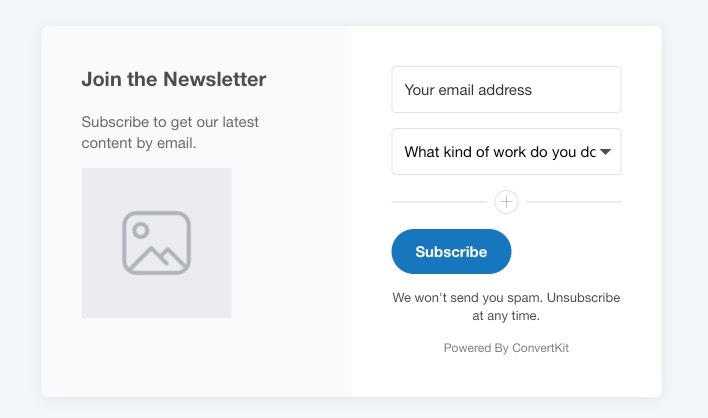
You could also use quiz software, like Interact, to create a multi-step lead capture form that ultimately captures an email address and some segment data.
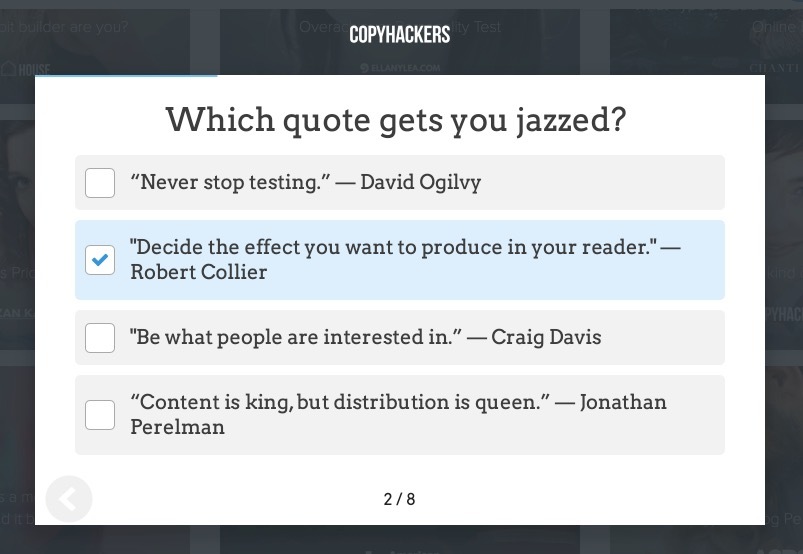
With RightMessage, you can create quizzes or just traditional opt-in forms, and we’ll automatically send up segment data to your new contact records, never ask questions we already have the answer to, and more.

The following is a bit more advanced, but is incredibly powerful – especially for increasing your overall opt-in conversion rates. (Who doesn’t want that?!)
By prefacing your opt-in forms with short questionnaires that ask Who and What, you’re not only able to capture this data right out of the gate and segment your new subscribers – but you can use this data to display better, more relevant opt-ins.
Let’s revisit the example I gave above.
We have two primary things we’re segmenting off of: the type of work they do (design, development, …) and their most pressing problem (finding leads, closing deals, …)
My website has a bunch of blog posts targeting consultants, and I want to capture this segment data when people join my newsletter.
In RightMessage, I’d setup a very simple two-question quiz funnel that then pitches my newsletter. And I’d use RightMessage to change the way I pitch my newsletter.
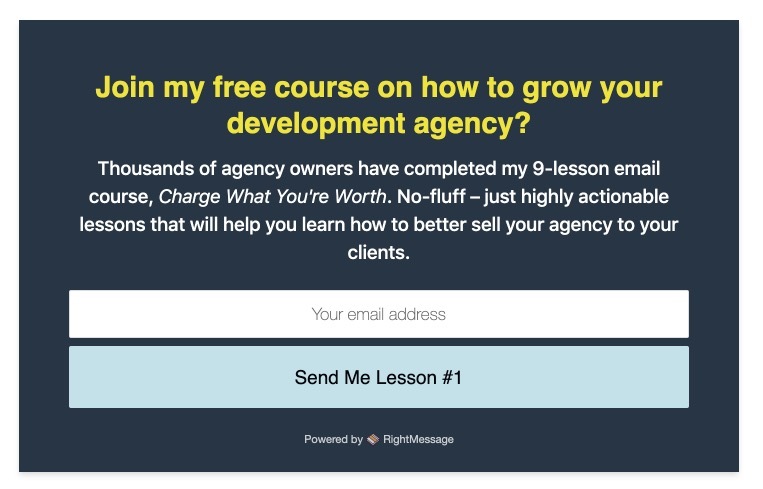
When onboarding a new subscriber
If you’re just collecting email addresses when opting people into your list, you can use trigger links (sometimes called link triggers) to allow people to self segment.
Pat Flynn, of SmartPassiveIncome.com, does a great job of this:
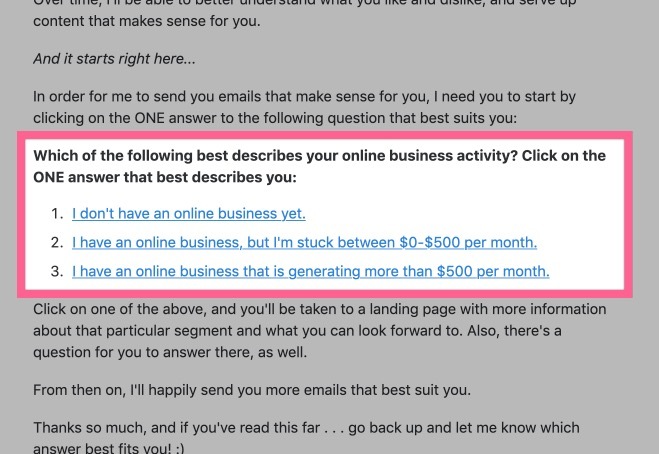
In your email marketing app, you’ll create one trigger link per possible segment. You’ll set it up so that when someone clicks one of these links, it sets the custom field you need set.
The problem with using trigger links to segment is that not everyone’s going to click.
On average, we’ve found about 30% of trigger link surveys get completed. This isn’t necessarily a bad thing, but one perk of segmenting on opting-in is that 100% of new subscribers will be segmented.
By progressively profiling subscribers over time
You could also slowly eek out data from subscribers by using a progressive profiling sequence. This is just an automation sequence that’s designed to send a simple series of emails with a straightforward list of trigger links.
I’ve done it (in ConvertKit) by having a sequence of emails, each spaced a week apart, that sends en email out on Sunday night that basically reads:
I’d love to learn a bit more about you so that I cans end you more relevant content. Which of the following best describes what you primarily do? (click one)
I have this sequence filtering out these emails if the underlying segment field is already set (e.g. they’ve been segmented when opting-in), so this sequence is really designed for people who joined my list in a non-traditional way: via a webinar registration form, by going straight to a purchase, etc.
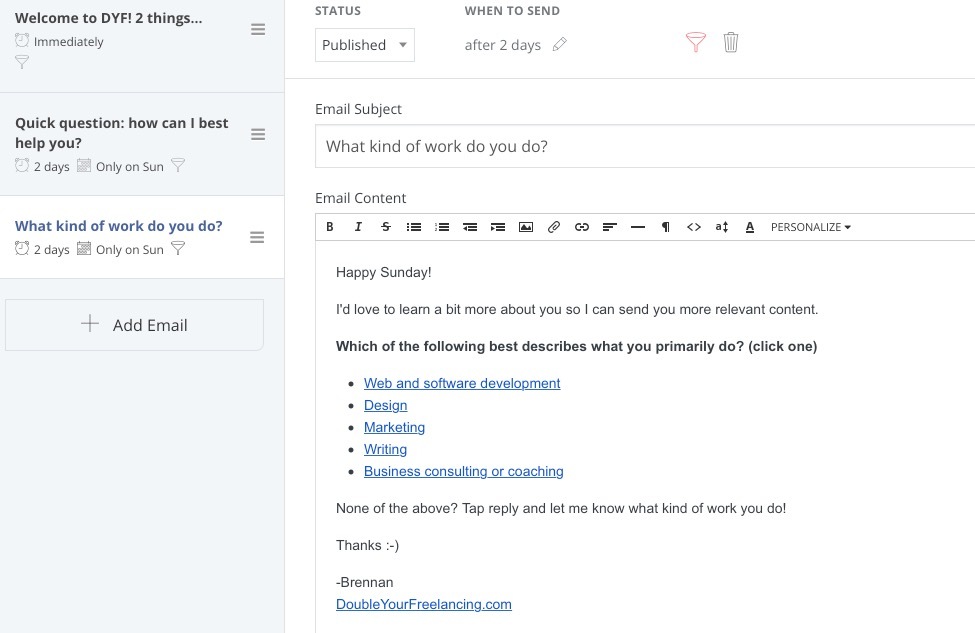
Using the survey you’ve already sent out to your list
If you’re not feeling trigger links, you could always just reuse the survey you already used to initially segment your entire list.
When onboarding new subscribers, link them to your survey and don’t forget to make it clear why it’s in their interest to complete it.
Welcome! I want to make sure I’m creating exactly what you need from me. Would you mind taking this 2-minute survey that will help be better understand who you are and how I can best serve you?
Segmentation super powers
Congratulations!
Your once-flat list is now segmented. You now have an idea of who someone is and what they need from you, and combined with the data you’re probably already storing in your email marketing database (things like purchases), you can now be more personal than ever with your audience.
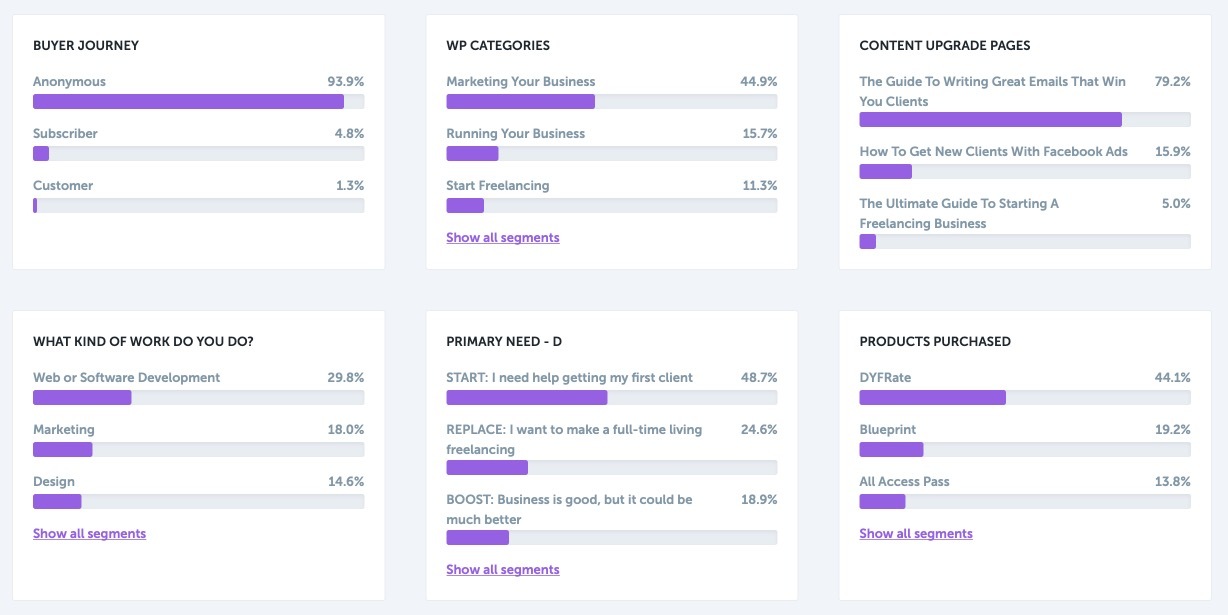
At a minimum, you can use your segment data to send different emails to different groups. Beginners should probably get this email sequence, whereas advanced people should get something else.
Or you can leverage your email marketing app’s templating functions to be able to swap out words or even entire paragraphs of text.
- Marketer? Show them an example that resonates with marketers.
- Writer? Here’s something that really strikes a chord with writers.
- Photographer? Here’s some photographer-speak that’ll have photographers nodding their heads.
You can also use software like RightMessage to make it so that when subscribers are back on your site, you’re able to personalize what products or services you promote to someone and even your sales pages.
If someone told you that they’re struggling to get clients and that they’re a designer, how much more effective would a call-to-action that speaks directly to their specific need?
How much more at home are they by seeing testimonials or other content that says: “Hey, you’re a designer. I appreciate that. Here’s how we’ve been able to help other designers like you.”
Segmentation is a super power.
Done right, you’re able to connect with your list in a way that’s typically only done for the most niche of niche businesses.
Your audience wants to ultimately be able to answer: How can this help me?
Once you’ve segmented your list, and use that segmentation to send more personal and relevant communication to your audience, that question will be so much easier to answer.
- About Us
- Contact Sales
- Contact Customer Support
- © RightMessage Inc. 2024
- Privacy Policy
- Terms of Service
